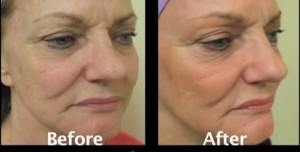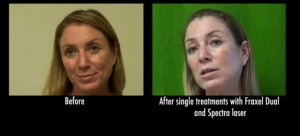Age Spots on the skin result from high concentrations or clusters of melanin, which gives skin its color. Melanin is pigment on the epidermis that is also responsible for tans. Ultraviolet (UV) light accelerates melanin production in order to protect deeper layers of the skin from overexposure.
Years of exposure to the sun’s UV light, as well as tanning beds, contribute to age spots. However, aging and genetics also play a role in formation. Older individuals may naturally produce more melanin. They are common on adults over 40 but can affect younger individuals. Age spots are more common on those with fair skin, though they also appear on darker skin. Genetics can also make some individuals to the development of age spots.
APPEARANCE OF AGE SPOTS
Age spots commonly appear on areas most exposed to the sun. This includes the face, shoulders, chest, upper back, tops of feet and back of hands. They can appear individually about the size of freckles to more than 1 centimeter. Groups of age spots also make them more prominent.
They appear:
- Flat, oval areas
- Brown, black or gray (usually)
Age spots are also known as liver spots, sunspots, brown spots or solar lentignes. They were originally thought to be associated with problems of the liver, but there is no correlation.

This Los Angeles patient received a Fraxel Repair treatment to improve the appearance of age spots.*
PREVENTION OF AGE SPOTS
Age spots are usually harmless but may be lightened with skin-bleaching treatments or removed. However, prevention is suggested to limit their appearance. Using sunscreen, limiting sun exposure and avoiding tanning beds are three of the best options.
Sunscreen
SPF 30 or higher sunscreen should be applied daily to the face and areas of the body exposed to sun. When in direct sunlight, swimming or sweating, sunscreen should be applied every two hours. A sunscreen regimen also prevents premature aging, such as wrinkles.
Limiting sun exposure
Moderate sun exposure when doing activities outside. Wear sunscreen, sunglasses a hat and protective clothing when possible. Also take breaks in the shade and use a shade device if outside for extended periods.
UV Protection Films
Los Angeles residents spend many hours each month in their cars. Due to idling long hours, people are unintentionally exposed to both UVA and UVB light. Applying UVA film to car windows limits this exposure, which can lead to wrinkles and age spots.
TREATMENT OF AGE SPOTS
Melanocytes within the epidermis produce melanin, which may result in age spots. In order to treat them, pigment needs to be broken down and the melanocyte cells need to be addressed. Both topical and laser treatments alleviate the appearance of age spots, dependent on the severity.
Topical Options
Skin bleaching is one of the most common treatments to address uneven skin tones. Over-the-counter (OTC) and prescription topical products may assist age spots. Hydroquinone is often incorporated into creams to whiten skin. It inhibits tyronsinase, an enzyme that controls melanin production.
The FDA distinguished OTC skin bleaching drug products containing 1.5 to 2 percent hydroquinone as generally recognized as safe and effective (GRASE) in 1982. While effective, hydroquinone was banned in Europe and Japan in 2001 due to its link with occurrences of leukoderma and ochronosis.The FDA questioned its safety in 2006 because of its potential as a carcinogen and requested additional studies in 2006.
It is currently available in the United States as an OTC topical 2 percent hydroquinone cream or by prescription at 4 percent.
LASER REMOVAL
Laser treatments effectively eliminate age spots in a short time frame. They work two-fold by breaking up melanin and destroying melanocytes. Two types of lasers accomplish this with light heat.

This Los Angeles patient underwent treatments with Spectra and Fraxel Dual that helped improve the appearance of age spots.*
Fraxel Lasers
Fraxel has three laser models that eradicate age spots. The Fraxel re:fine works on minor pigmentation issue with a 1,927 nanometer wavelength. The Fraxel DUAL features both the 1,927 nanometer wavelength and 1,550 nanometer wavelength laser option. The latter wavelength penetrates skin deeper more prominent cases. Both are safe for all colors of the skin based on the Fitzpatrick scale. Fraxel re:pair is another option for more severe age spots. It’s an ablative CO2 laser that works on hard-to-treat age spots but is only recommended for lighter skin tones.
Spectra Laser
Spectra is a dual mode Q-switched laser with four wavelengths. The versatility for treatment is possible with 532, 585, 650 and 1,064 nanometer options. The longer wavelength allows for treatment on those with darker skin and pigmented lesions.
Multiple laser treatments may be required on certain age spot issues. It’s important to consult with a board certified specialist to determine the best course of treatment. Differences in pigment, skin type and depth of age spots are all guiding factors for a laser treatment.
